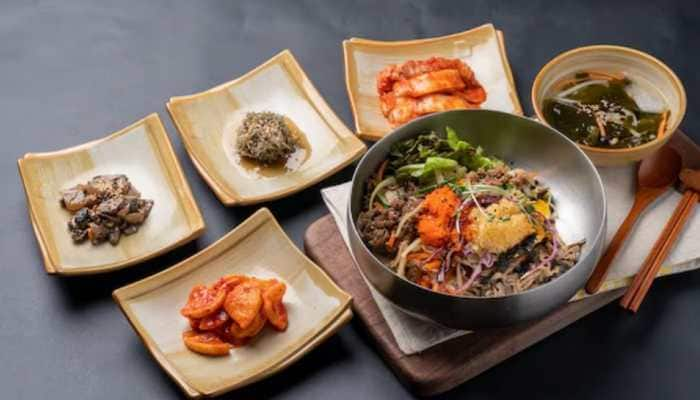Gold leaf used in facials in Japan
The delicate sheets of gold used to decorate Kyoto`s Golden Pavilion temple, first built in Japan`s ancient capital over 600 years ago, have found a new application for modern Japanese women -- as facials.
Trending Photos
)
Tokyo: The delicate sheets of gold used to decorate
Kyoto's Golden Pavilion temple, first built in Japan's ancient
capital over 600 years ago, have found a new application for modern
Japanese women -- as facials.
Apart from temples, ''Kinpaku'' gold leaf is also used to
decorate Lacquerware and other crafts but its primary application
has been on religious items, which have been hit by sinking sales.
The annual production of Kinpaku in Kanazawa, on the Japan sea coast
where about 98 percent of Japan's gold leaf is produced, has fallen
to around 2.5 billion yen (USD 20.98 million), industry sources
say.
Akira Noguchi, at Kanazawa's Kinpaku cooperative, said output has
fallen to about one-fifth of what it was during Japan's financial
bubble of the 1980s when gold was a favoured metal.
''Some 70-80 per cent of Kinpaku is used to make Buddhist
religious items ... And that's not doing so well,'' Noguchi said.
Not happy to see an old tradition die, Hakuichi Co. Ltd.,
established in 1975, a few years ago began to use the gold leaf
in lotions and cream as well as in facials to try to stimulate
new consumption.
''I wanted to develop new ways to apply the skill that we
had,'' Hakuichi president Kuniko Asano said.
She said that while gold's benefits have not been clinically
tested, it has traditionally been thought to improve circulation as
well as have disinfectant qualities.
Gold mask
Whatever its skin enhancing properties, those who have had
the treatment -- which uses gold leaf that is almost pure gold and
can even be consumed -- says it makes them feel good.
50-year-old Kaoru Takahashi, who recently tried Hakuichi's
gold facial for the first time, said that her skin felt softer and
more supple after the leaf had been massaged into her skin.
She had a picture of herself taken with her own mobile phone as
she reclined, wrapped in a soft beige bathrobe, her hair in a turban
and her face a mask of shimmering gold.
The close-up would be sent to her friends, who had expressed an
interest in the massage, which is usually included in a 60-90 minute
session costing 15,750-21,000 yen.
''You hardly feel it, it's so light,'' said Takahashi, a mother
of three children.
Although similar gold leaf can be found in other parts of the
world, Japan's Kinpaku is considered among the finest.
A piece of gold about the size of a small coin is beaten to a
thickness of about 0.0001 mm, until it is the size of a Tatami straw
mat (around 91 cm by 1,82 cm).
Asano said she is aiming for eventual annual sales of about
300 million yen from the company's cosmetics division.
Total annual sales at Hakuichi, which makes the Kinpaku as well
as applies it in various products, are about 1.6 billion yen.
Prospects are not so bright for many struggling in the industry,
however. Her husband's family Kinpaku business, which stuck to
tradition, has gone bankrupt.
No industry figures were available for gold consumption, but
Asano said that Hakuichi used about 50-100 kg a year.
Although Asano declined to say how much gold the company
typically kept in stock in the company's safe, she said, ''We
usually have enough to allow us to remain in business.''
The Golden Pavilion temple's glow was restored when 20 kg
of gold Kinpaku was used in its renovation in 1986-87.
The current building was reconstructed in 1955, five years after
a young Buddhist monk set fire to the original structure, an
incident depicted in a novel by Yukio Mishima.
Bureau Report
Stay informed on all the latest news, real-time breaking news updates, and follow all the important headlines in india news and world News on Zee News.
Advertisement
Live Tv
Advertisement







)
)
)
)
)
)
)
)
)
)
